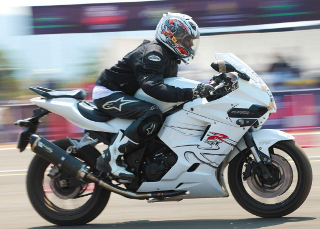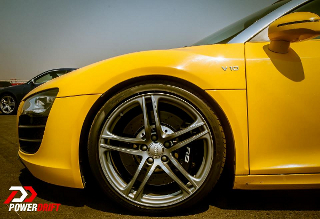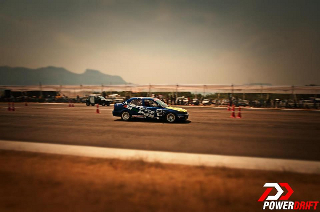WHAT IS DRAG RACING?
Henry Ford introduced the automobile to the masses with his less expensive vehicles built on an assembly line. Once cars were being used widely, it was only a matter of time before the human love of competition took over. Dry lake beds and two lane strips of roadway became the first places to test your vehicle against another driver. These non-sanctioned events were essentially illegal drag races that took place throughout the country. A few fans of this growing competition began developing rules and regulations that have led to the NHRA or National Hot Rod Association that we know today.
Speed demons were able to break the 100mph barrier on the Muroc dry lake bed in California's Mojave Desert, but it was not until 1950 that a man by the name of C.J. Hart was able to open the first official drag strip for racing. As soon as people saw the opportunity to race in safer and well-timed events the sport of drag racing was truly born. This first drag strip ran races until 1959 and by that time the NHRA had multiple national events taking place throughout the United States.
When the first track was created, the idea of what drag racing has become today did not exist. These were just races, plain and simple – drag racing did not earn its name until sometime later. To be honest, no one actually knows the real story of why they decided to call straight line speed races, drag races. One theory is that because these races stem from a challenge made from one party to another that the first racer may have said, "Drag your car out of the garage and race me!" Another idea seems more rooted in fact and based upon where the race would take place. Paved roads were few and far between in the early days of motoring so the main "drag" or road through town could have been the setting for early races. As the sport evolved and began taking place on sanctioned courses, some drivers would "drag" through the gears or hold the car in the same gear for a longer period of time. We may never know the first time a sanctioned race was called a drag race, but all of these ideas are possibilities.
Santa Ana, California would become the first place that a commercial drag strip would come to exist. C.J. "Pappy" Hart and his colleague Creighton Hunter recognized that racing in the streets was dangerous and illegal, and wanted to legitimize the sport. Before the airport was known as John Wayne International, an unused runway was being used to hold drag races on Sundays during the 1950s.
Hart became the sole owner of the strip within the first month of operation and he also ran a gas station in Santa Ana. His first goal was to establish a distance for the cars to race. This way things could be measured and a real winner could be discovered. He decided to use the Quarter-Mile based upon its accepted use in quarter horse racing. He then was able to establish different classes of cars based upon their abilities in order to make races fair. The cars were split up according to axle ratios, year, make, engine displacements, and safety equipment.
Races were $0.50 and nearly 50 cars were competing every week – business was booming! Eventually the good times had to end and the airport's extension in 1959 ran the drag racers off their course. It was not long before the Lion’s Drag Strip at the Orange County Fairgrounds was open for business and drag racing could continue. Pappy had become a racing icon and went on to hold multiple positions. His love for high speed thrills continued well into his old age and he was even ticketed for going 85mph in his motor home.
The top fuel dragsters are machines purpose-built for this type of race. Their name is derived from the mix of fuel in use which consists of 90% nitro methane and 10% alcohol. By using this mixture instead of regular gasoline, the cars are able to produce more power in their engines. The Top Fuel Dragster uses small front wheel with a long front frame. The narrow frame leads to the drivers cell and roll cage and eventually to the engine in the back. Because of the dangerous nature of these machines and for weight distribution, the engine is located as far back as possible. Large rear wheels and tires help put the immense power to the ground and move the cars in a straight line as quickly as possible.
These vehicles travel so fast that after the race is completed a parachute is deployed to slow them down. Some courses are not capable of handling full quarter-mile races from the Top Fuel cars and thus 1000-foot races are held. The race itself only lasts about 3.8 seconds for the short course and 4.5 seconds for the full quarter-mile races. In that time the driver has accelerated to speeds in excess of 333mph.





